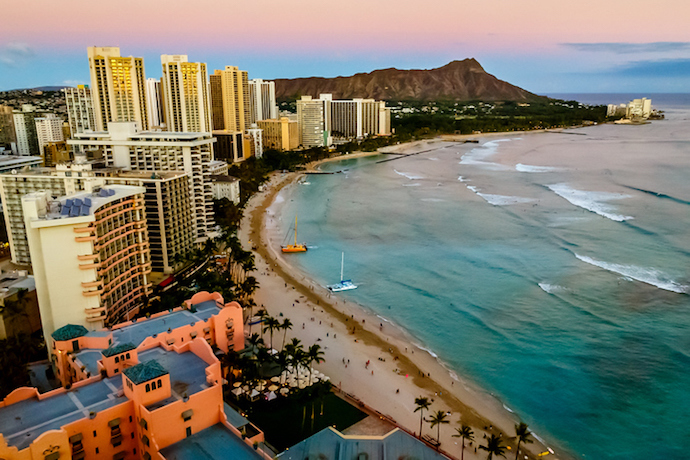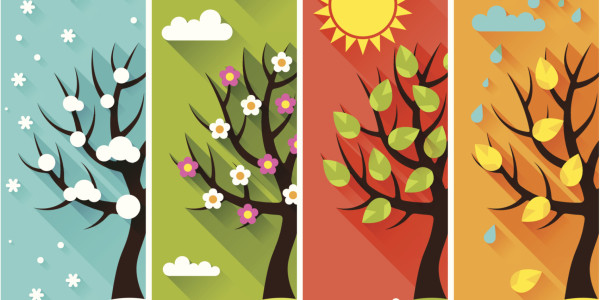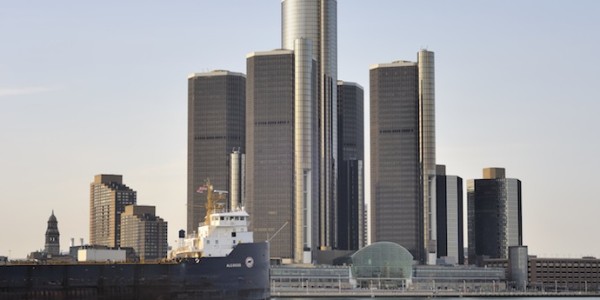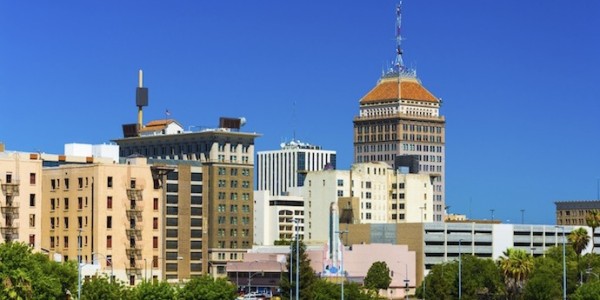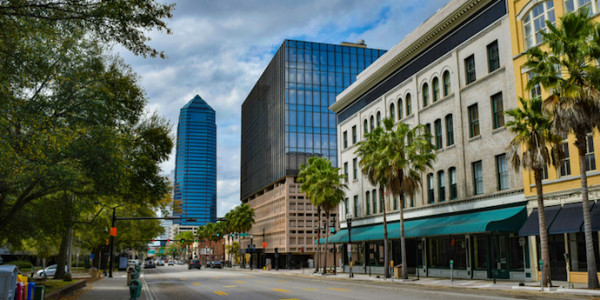Navigation Jump Links
- Honolulu at-a-glance
- What it’s like to live in Honolulu
- Economy and job outlook in Honolulu
- Real estate, cost of living in Honolulu
- The top neighborhoods in Honolulu
- How to get around in Honolulu
- School and education snapshot
- Weather and climate in Honolulu
- 10 can’t-miss things to do in Honolulu
Honolulu At-A-Glance
Honolulu is Hawaii’s capital and most populous city, with nearly 350,000 people calling it their home. It goes by many names, from the Crossroads of the Pacific, the Sheltered Bay, the Big Pineapple and our favorite, Paradise. And it’s really no wonder: nestled on the southeast coast of the gorgeous island of Oahu, the city and its surrounding areas are known for their natural beauty and year-round sunshine.
While living in Honolulu comes with a relaxed island vibe, the city is also an economic hub and trade center, leading to plenty of urban amenities, a good job market and a diverse community. With a population that identifies as nearly 39 percent Asian, less than 25 percent white and 10 percent Native Hawaiian, Hawaii is the third-most diverse state in the U.S., and its capital certainly reflects the influences of its unique population.
Honolulu is Infused with a Rich Cultural Heritage
Living in Hawaii means being surrounded with Native Hawaiian history and culture, from the magnificent Iolani Palace—the restored home of Hawaii’s former monarchy—to luaus, hulas and traditional Hawaiian cuisine. But with the boom of Chinese, Japanese and other Asian immigrants starting in the 1800s, much of the culture on the islands has also been influenced by Asian tradition, language and more. The resulting joining of foods and practices has created a vibrant and diverse community.
Honolulu happens to be the hub of the state’s art scene. You can explore traditional Hawaiian handicrafts and arts at the Hawaii State Art Museum and the Honolulu Museum of Art. The Bishop Museum, on the other hand, provides extensive artifacts, photos and documents about Hawaiian and other Polynesian cultures.
If contemporary art is more your speed, you must check out the Kaka’ako neighborhood. The streets are considered a “living gallery” full of colorful murals.
Music is an important part of island life, and you’ll find no shortage of venues for live music, whether you’re looking for jazz at Blue Note Hawaii or you prefer the symphony and classical concerts held at the iconic Neal S. Blaisdell Center Concert Hall. The annual Ukulele Festival is almost a must-do.
Tourism, Agriculture and the Military Lead Honolulu’s Industries
Big surprise: tourism is huge in Hawaii, and that holds true for Honolulu. But as a crossroads between East and West, the city is also the business and trading hub of the state. Other big industries include military defense, research and development, and manufacturing.
Altres Industrial, Pearl Harbor Naval Shipyard and Kapiolani Medical Center are just three of the city’s major employers.
Hawaii has maintained lower unemployment rates than the national average, with Honolulu continuing to see its rate drop to an impressive 2.5 percent in October 2023. The city has also been adding jobs, with nearly 8,500 jobs added in the third quarter of 2023.
One of the Most Expensive Places to Live in the U.S.
Depending on whose metrics you use, Honolulu may even top the list as the most expensive city in the country. While the usual suspects are up there with it, living in this little island city costs about 84 percent more than the national average. While some of this is due to the cost of shipping food and goods in from the mainland, housing is a big culprit.
Housing in Honolulu costs over 200 percent more than the national average. The median home sale price was $580,500 in November 2023, up 12.2 percent from 12 months prior. Homes are staying on the market longer, though, and the market isn’t considered competitive.
And yes, rents are high too. In December 2023, the average rent for a 1-bedroom apartment was $2,045, while the average rent for a 2-bedroom was $2,807.
If you’ll be moving to Honolulu in search of a new career, the median household income was $99,816 according to the 2022 census.
Honolulu’s Neighborhoods Are Vibrant and Diverse
While Oahu’s beaches and gorgeous landscapes are certainly a draw, Honolulu’s neighborhoods have even more to offer. Whether you’re in search of a close, safe community or a hopping and bopping nightlife, you’ll find it in one of the city’s diverse neighborhoods. Check out these highly recommended neighborhoods for those moving to Honolulu:
WAIKIKI
Known to everyone inside and outside of Hawaii, Waikiki is a bustling neighborhood known for its gorgeous beaches, vibrant nightlife and of course the luxury hotels full of tourists. If you’re looking for world-class dining and nonstop fun, this is your spot.
KAIMUKI
Kaimuki is small but eclectic, with a variety of mom-and-pop shops, boutiques, coffee shops and the KCC Farmer’s Market. Charming and laid-back, it promises a tight knit community you won’t find anywhere else in Honolulu.
MANOA
Popular not only for its lush, gorgeous scenery, Manoa also offers safety and great schools. It’s understandably a family pick, but many young professionals and college students also live here as it’s home to the University of Hawaii at Manoa.
HAWAII KAI
Home to many of Oahu’s most stunning sights, this planned community is ideal for lovers of the outdoors who are seeking quick access to Hawaii’s parks and ocean fun. Families also appreciate its well-rated schools.
KAKA’AKO
This trendy neighborhood is an urban center full of vibrant street art, great shopping, plenty of entertainment and hip eateries. Its walkability and access to the beach make it a favorite among young professionals and families.
Other neighborhoods to include in your Honolulu home search:
- Highland Park
- Bishop Arts District
- Oak Lawn
- Preston Highlands
- Campbell Green
TheBus Takes You Anywhere in the City and Around the Island
The official transit service of Oahu is simply named TheBus—no space. It offers 100 routes and more than 4,000 stops to get folks just about anywhere they need to go on the island, including easy treks to and from the airport. Fares are a low $2.50, with multi-day passes available to help you save.
For a more private option, there are of course plenty of taxis and rideshares available. But if you want to enjoy the outdoors as you take in the sights, you could also take advantage of Biki, the city’s bikeshare program.
Education Opportunities in Honolulu
The public school system in Honolulu is unique in that it’s part of the Hawaii Department of Education. This is the only district in the U.S. that oversees all the schools across the entire state, and it’s therefore one of the largest. While a few years ago Hawaii ranked low for its K-12 education, it’s been making strides in recent years to combat absenteeism and raise test scores.
Looking at higher education options? Check out the University of Hawaii at Manoa, Chaminade University of Honolulu and Hawaii Pacific University.
Honolulu’s Weather is Just About Perfect
Hawaii has a two-season weather pattern—summer and winter—but there’s not a huge temperature difference between the two. August is the hottest month with an average high of 89 degrees Fahrenheit. January is certainly the coldest, but the average overnight lows are just 67 degrees and rarely dropping below that.
It also has a dry season from April through October, with November through April being the rainy season. But don’t fret! Even during the rainy season, there’s more rain than sun. Sure, living in Honolulu means you’ll need to prepare for the possibility of natural disasters, but thankfully those are rare, and the rest of the time you’re left with gorgeous weather.
10 Can’t-Miss Things to Do in Honolulu
While you’re sure to find great eats and plenty to do when living in Honolulu, let’s face it: a lot of the best things about this city have to do with the beach, the views and the weather. Here’s a list of 10 must-dos in the Big Pineapple:
- Hit up the world-famous Waikiki Beach for a surf lesson or maybe just some ice cream and a stroll.
- Take a walk across history at the Pearl Harbor National Memorial.
- Rise early and walk the Koko Crater Trail for a sunrise view from the summit.
- Shop around the open-air shopping center, Ala Moana.
- Find one of the many drive-up lookouts, like the Puʻu ʻUalakaʻa State Park lookout, for a gorgeous view of the city.
- Kayak to the Mokulua Islands off Lanikai Beach.
- Attend an authentic luau with dancers and a fire show.
- Take a sunset cocktail tour of the coast.
- Swim with sea turtles—or sharks if you dare!
- Tour the stunning Iolani Palace.

